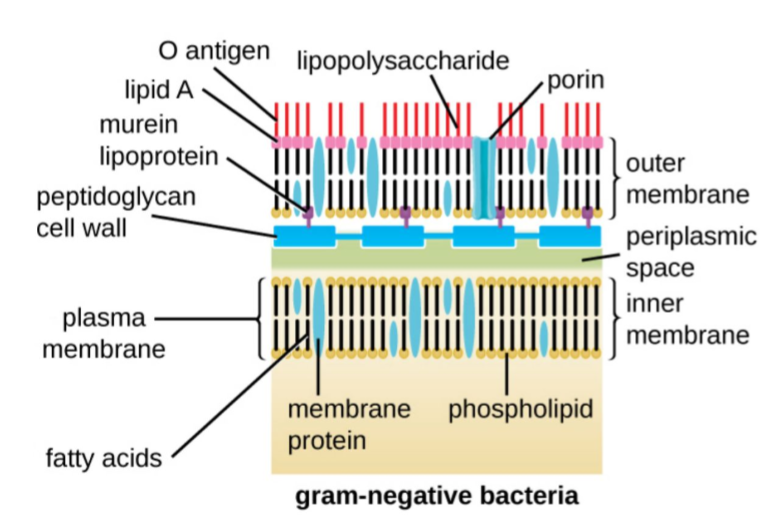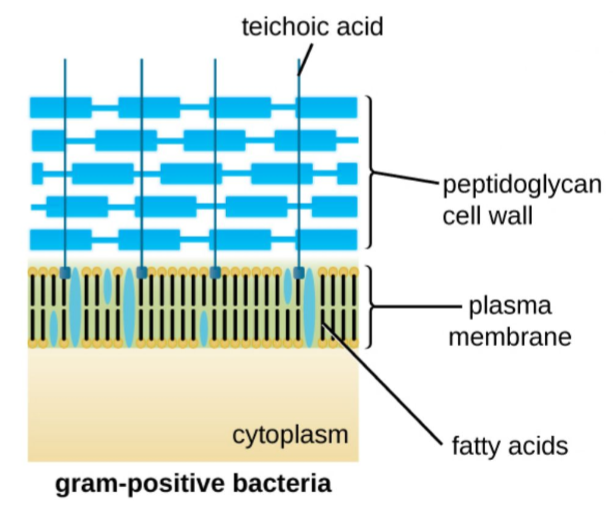Microbio test 1
5.0(1)
5.0(1)
Card Sorting
1/134
There's no tags or description
Looks like no tags are added yet.
Study Analytics
Name | Mastery | Learn | Test | Matching | Spaced | Call with Kai |
|---|
No study sessions yet.
135 Terms
1
New cards
archaea are all extremophiles
false
2
New cards
what is true about fungi?
Included the unicellular yeasts, like Saccharomyces cerevisiae (brewer's/ baker's yeast)
3
New cards
which group has peptidoglycan cell walls?
bacteria
4
New cards
Which classification scheme is based on molecular phylogeny?
the three domains
5
New cards
all eukaryotes are multicellular
false
6
New cards
viruses cannot live without a host cell
true
7
New cards
What is the difference between prokaryotes and eukaryotes?
Eukaryotes have a nucleus, Prokaryotes do not
8
New cards
photosynthesis in only found in plants
false
9
New cards
microorganisms were known about in 2000 BC
false
10
New cards
Sergei Winogradsky
proposed chemolithotrophy
11
New cards
Carl Woese
discovered Archaea
12
New cards
Martinus Beijerinck
developed selective media
13
New cards
Fanny Hesse
developed use of agar in solid media
14
New cards
Louis Pasteur
determined that attenuated pathogens could be used to create vaccines
15
New cards
Robert Koch
linked bacillus anthracis to anthrax disease
16
New cards
Lazzaro Spallanzani
disproved spontaneous generation
17
New cards
coccus shape
spherical/ovoid
18
New cards
bacillus shape
rod-shaped/cylindrical
19
New cards
coccbacillus shape
short rod
20
New cards
cytoskeletal proteins
FtsZ, MreB, CreS
21
New cards
FtsZ
tubulin homologue, contractile ring
22
New cards
MreB
actin homologue, elongation of cell, motility, polarity
23
New cards
CreS
crescentin - intermediate filament protein homologue, polymerizes along inner curve
24
New cards
DNA binding proteins in
bacteria
25
New cards
histones in
archaea
26
New cards
bacterial cytoplasmic membrane
phospholipid bilayer, embedded proteins, hydrophobic fatty acids, hydrophilic glycerol and phosphate
27
New cards
sterols exist in
eukaryotes
28
New cards
hopanoids exist in
some bacteria
29
New cards
cell envelope components
cytoplasmic membrane, cell wall, outer membrane (some bacteria)
30
New cards
Gram positive cell envelope
thick peptidoglycan wall, inner cytoplasmic membrane
31
New cards
Gram negative cell envelope
outer membrane, thin peptidoglycan wall, inner cytoplasmic membrane
32
New cards
bacterial cell wall
sacculus of peptidoglycan
33
New cards
peptidoglycan components
glycan polysaccharides, NAG, NAT, L-amino acids, B-1,3 bonds
34
New cards
wall-less G+ cell
protoplast
35
New cards
wall-less G- cell
spheroplast
36
New cards
periplasm
between cell membrane and cell wall/outer membrane
37
New cards
G- cell wall

38
New cards
G+ cell wall

39
New cards
DNA binding proteins
control DNA supercoiling
40
New cards
lipoproteins
anchor outer membrane
41
New cards
lipopolysaccharides
molecules on the outer membrane
42
New cards
G+ and G- flagella are exactly the same
false
43
New cards
what bacteria have teichoic and lipoteichoic acid
G+
44
New cards
what are teichoic and lipoteichoic acid embedded in
the G+ cell wall
45
New cards
cell envelope is composed of
peptidoglycan
46
New cards
structure for spirochete
endoflagella
47
New cards
structure for bacterium transferring DNA to another cell
pilus
48
New cards
structure for an archaeon forming a biofilm
hami
49
New cards
structure for a bacterium forming a biofilm
fimbriae
50
New cards
motility structure in eukaryotes
cilia
51
New cards
structure for a bacterium in an aquatic environment
flagella
52
New cards
structure for an archaeon in an aquatic environment
archaella
53
New cards
the capsule is found on the outer coat of the endospore
false
54
New cards
isoprene chains serve as the hydrophobic tail in the archaeal cytoplasmic membrane
true
55
New cards
in an archaean lipid monolayer, 1 phytanyl spans the entire membrane and links 2 hydrophobic heads
true
56
New cards
the glycerol backbone of pseudopeptidoglycan found in eukarya cell membranes has sn-glycerol-1-phosphate linkages
false
57
New cards
peptidoglycan found in the s-layer of archaea has D-form amino acids crosslinking the glycan chains
false
58
New cards
ether linkages in eukarya are found between the hydrophobic tails and the hydrophobic head in the phospholipid bilayer of the cytoplasmic membrane
false
59
New cards
heterocysts are a type of spore found in photosynthetic filamentous cyanobacteria
false
60
New cards
sporulation is the process where an endospore returns to a vegetative state
false
61
New cards
what does Anabaena produce under stress
akinetes
62
New cards
Anabeana stress conditions
sunlight limitation, cold temps
63
New cards
akinetes are resistant to
desiccation
64
New cards
G+ and G- flagella are homologous structures
true
65
New cards
E. coli has what motility structure
flagella
66
New cards
E. coli flagella arrangement
peritrichous
67
New cards
E. coli flagella rotation for a run
CCW
68
New cards
E. coli flagella rotation for a tumble
CW
69
New cards
movement in response to chemical gradient
chemotaxis
70
New cards
components ONLY in G- bacteria
porins, murein lipoproteins, outer membrane
71
New cards
during cell division, a G- bacteria in a curved bacillus shape will have what cytoskeletal proteins
FtsZ, MreB, crescentin
72
New cards
Type IV pili
are found in bacteria and archaea, uses ATPase for power, can be used for gliding motility
73
New cards
Borrelia motility structure
endoflagellum
74
New cards
periplasm
between inner and outer membranes
75
New cards
transcription and translation in bacteria
coupled
76
New cards
bacterial transcription and translation happen
surface of nucleoid
77
New cards
hopanoids
part of cytoplasmic membrane in some bacteria, similar to sterols in eukaryotes
78
New cards
how does penicillin kill bacteria
inhibits a transpeptidase enzyme from forming peptide crosslinks in peptidoglycan, that results in osmotic lysis of the cell
79
New cards
a bacterial cell has its wall broken and becomes a protoplast. what type of solution must the cell be in if it undergoes osmotic lysis
hypotonic
80
New cards
archaean cell walls
pseudopeptidoglycan
81
New cards
fungi cell walls
chitin
82
New cards
plant cell walls
cellulose
83
New cards
animal cell walls
none
84
New cards
chlorosomes
phospholipid monolayer light-harvesting structures attached to cell membrane for anoxygenic photosynthesis
85
New cards
carboxysome
protein-bound polyhedral bodies that contain Rubisco that increase efficiency of CO2 fixation
86
New cards
thylakoids
folded sheets of intracellular membranes with photosynthetic proteins and e- carriers
87
New cards
megnetosomes
lipid-bilayer containing crystals of magnetite that generates a magnetic dipole
88
New cards
magnetosomes are structures found inside bacteria that have magnetite crystals surrounded by a lipid bilayer with embedded proteins
true
89
New cards
a lipid bilayer forms bipyramidal gas vacuoles within bacteria and archaea
false
90
New cards
carbonosomes are protein shells containing poly-beta-hydroxyalkanoates (PHAs) that serve as carbon and energy storage molecules
true
91
New cards
thylakoids are found in cyanobacteria and chloroplasts
true
92
New cards
order of events in bacterial generation
DNA replication, cell elongation, formation of a septum, cell separation
93
New cards
how many cells can form each colony/CFU
each CFU can be formed by a single cell or a group of clustered cells
94
New cards
death phase
rate of death exceeds rate of growth
95
New cards
lag phase
no cell division or new growth
96
New cards
log phase
exponential growth of colony
97
New cards
stationary phase
death rate = new cell rate
98
New cards
MacConkey agar
selective for G-, uses lactose and neutral red
99
New cards
extracellular matrix is used in what type of growth
sessile
100
New cards
Sulphur globules
inclusion, sulphur produced by anaerobic phototrophs for oxidation for energy, stored in cytoplasm or on surface